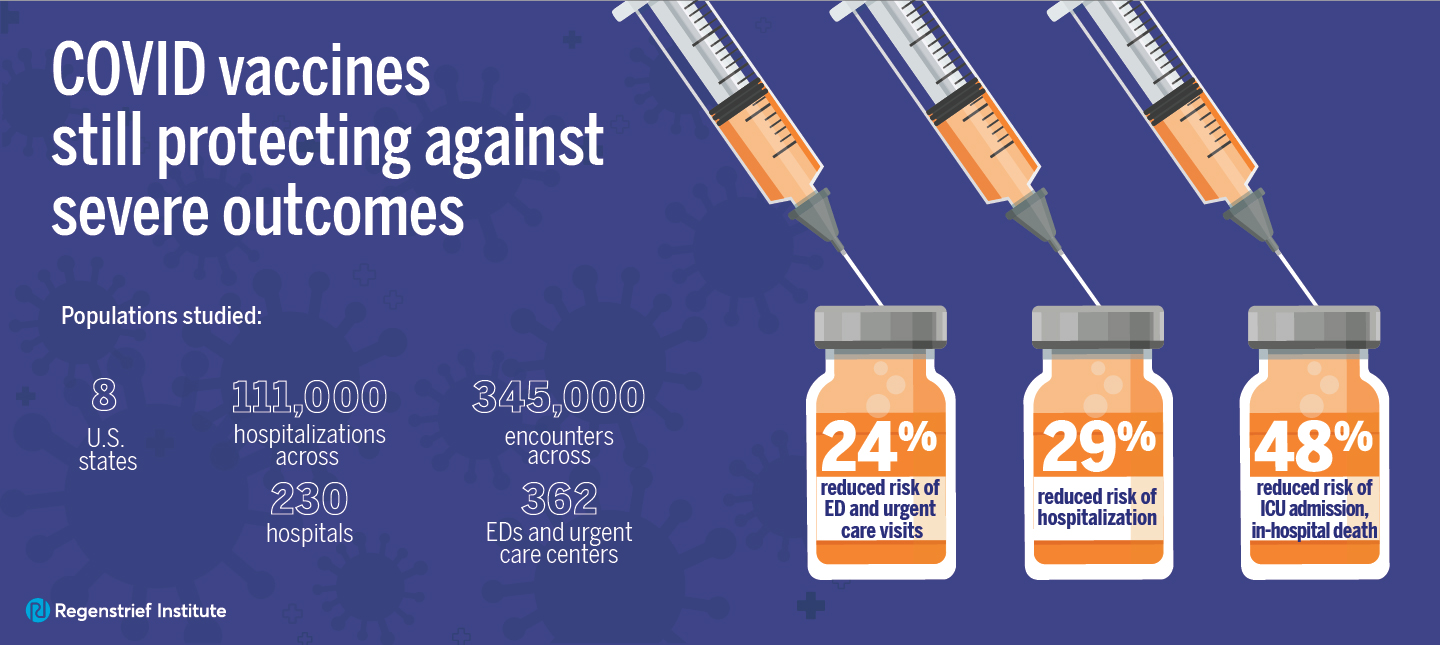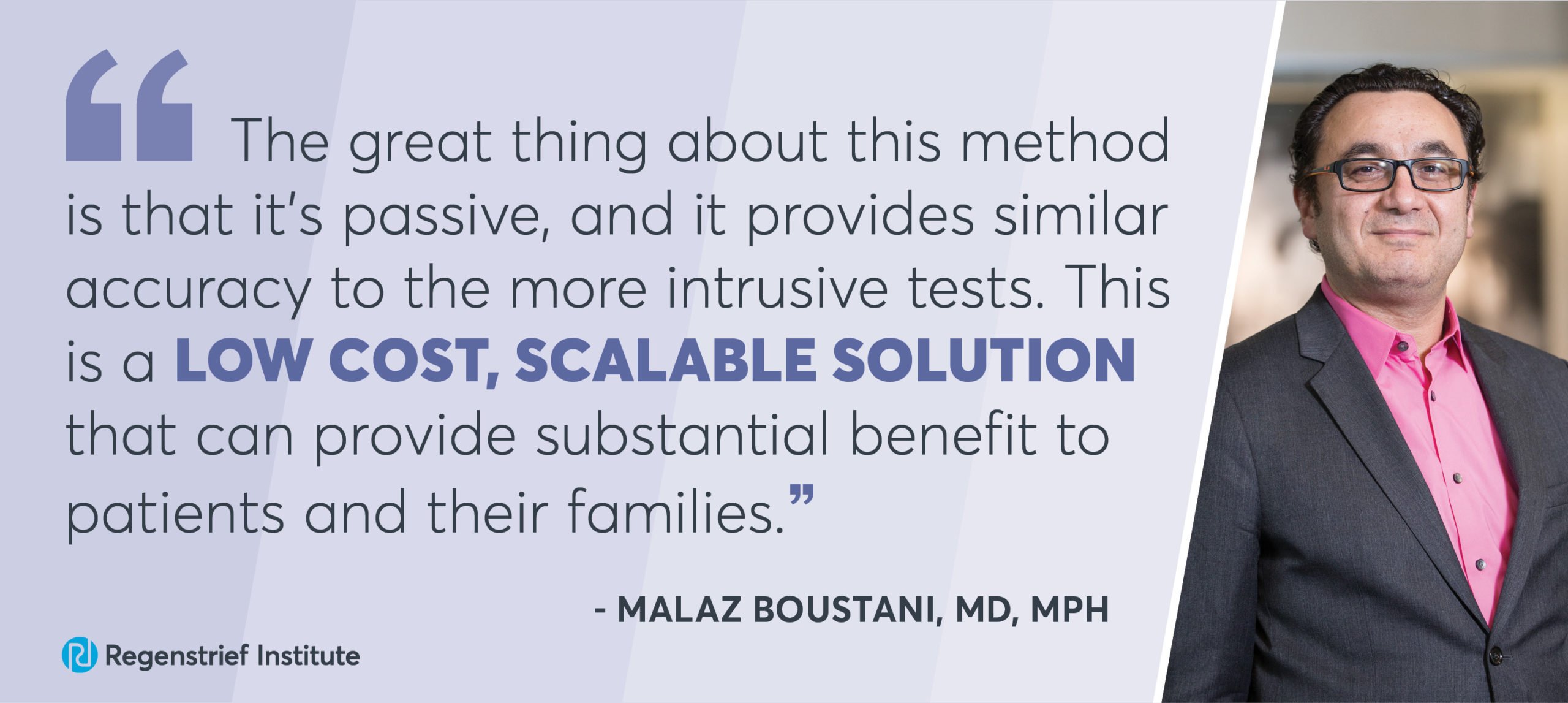Screening using EMR data could help with early identification of Alzheimer’s disease risk
Information gathered from routine visits to the doctor is enough to accurately predict a person’s risk of developing Alzheimer’s disease and related dementias, according to new research led by scientists from Regenstrief Institute, Indiana University and Merck. The researchers developed and tested machine learning algorithms using data from electronic medical records to identify patients who may be at risk for developing dementia.
At least 50 percent of older primary care patients living with Alzheimer’s disease and related dementias never receive a diagnosis. And many more live with symptoms for two to five years before being diagnosed. Currently, tests to screen for dementia risk are invasive, time-consuming and expensive.
“The great thing about this method is that it’s passive, and it provides similar accuracy to the more intrusive tests that are currently used,” said lead researcher Malaz Boustani, M.D., MPH, a research scientist at Regenstrief Institute and a professor at Indiana University School of Medicine. “This is a low cost, scalable solution that can provide substantial benefit to patients and their families by helping them prepare for the possibility of life with dementia and enabling them to take action.”
Developing machine learning algorithms for predicting dementia
The research team, which also included scientists from Georgia State, Albert Einstein College of Medicine and Solid Research Group, recently published its findings on two different machine learning approaches. The paper published in the Journal of the American Geriatrics Society analyzed the results of a natural language processing algorithm, which learns rules by analyzing examples, and the Artificial Intelligence in Medicine article shared the results from a random forest model, which is built using an ensemble of decision trees. Both methods showed similar accuracy at predicting the onset of dementia within one and three years of diagnosis.
In order to train the algorithms, researchers gathered data on patients from the Indiana Network for Patient Care. The models used information on prescriptions and diagnoses, which are structured fields, as well as medical notes, which are free text, to predict the onset of dementia. Researchers found that the free text notes were the most valuable to help identify people at risk of developing the disease.
“This research is exciting because it potentially provides significant benefit to patients and their families,” said Patrick Monahan, PhD, study author from IU School of Medicine and a Regenstrief affiliate scientist. “Clinicians can provide education on behavior and habits to help patients cope with their symptoms and live a better quality of life.”
Zina Ben Miled, PhD, M.S., a study author from the Purdue School of Engineering and Technology at IUPUI and a Regenstrief affiliate scientist, said, “The early risk identification allows an opportunity for doctors and families to put a care plan in place. I know from experience what a burden it can be to deal with a dementia diagnosis. The window provided by this test is so important to help improve the quality of life for both patients and their families.”
In addition to the benefit to families, these methods can also provide significant cost savings for patients and health systems. They replace the need for expensive tests and allow clinicians to screen entire populations to identify those most at risk. Delaying the onset of symptoms also saves a significant amount of money on treatment.
The next step is to deploy these machine learning algorithms in real-life clinics to test if they help identify more true cases of dementia as well as to learn how they impact a patient’s willingness to follow up on the results.
About the papers
Dr. Ben Miled is first author on “Predicting dementia with routine care EMR data,” which has been published online ahead of print in the Journal of Artificial Intelligence in Medicine. Dr. Boustani is the senior author. Other authors are Kyle Haas, M.S. from the Purdue School of Engineering and Technology at IUPUI; Christopher M. Black, PhD, MPH, Rezaul Karim Khandker, PhD, MBA, and Vasu Chandrasekaran, PhD, from Merck and Co., Inc.; and Richard Lipton, M.D. from Albert Einstein College of Medicine. This research was supported in part by Merck Sharp & Dohme Corp., a subsidiary of Merck & Co., Inc.
Dr. Boustani is the first author on “Passive Digital Signature for Early Identification of Alzheimer’s Disease and Related Dementia,” which has been published online ahead of print in the Journal of the American Geriatrics Society. Dr. Monahan is the senior author. Other authors are Paul R. Dexter, M.D., a Regenstrief Institute scientist and associate professor of medicine at IU School of Medicine; Anthony J. Perkins, M.S., IU School of Medicine; Stephen Duong, M.A., M.S., Georgia State; Christopher M. Black, PhD, MPH, Rezaul Karim Khandker, PhD, MBA, and Vasu Chandrasekaran, PhD, Merck and Co., Inc.; Richard Lipton, M.D., Albert Einstein College of Medicine; and Craig A. Solid, PhD, Solid Research Group, LLC. This study was supported by Merck Sharp & Dohme Corp., a subsidiary of Merck & Co., Inc. It was also supported in part by the Einstein Aging Study: NIH/NIA 2PO1 AG 003949.
More about Malaz Boustani, M.D., MPH
In addition to his role as a research scientist at Regenstrief Institute, Malaz Boustani, M.D., MPH, is the founding director of the Center for Health Innovation and Implementation Science and a professor and the Richard M. Fairbanks Chair in Aging Research at Indiana University School of Medicine. He is also the founding director and chief innovation and implementation officer at the Sandra Eskenazi Center for Brain Care Innovation, in addition to being the director of senior care innovation at Eskenazi Health.
More about Patrick Monahan, PhD, M.S.
Patrick Monahan, PhD, M.S., is a professor of biostatistics at Indiana University School of Medicine and Indiana University Richard M. Fairbanks School of Public Health at IUPUI. He is a Regenstrief Institute affiliate scientist as well as director of analytics for the Sandra Eskenazi Center for Brain Care Innovation, IU Cancer Control & Prevention Program, and the Center for Health Innovation & Implementation Science.
More about Zina Ben Miled, PhD, M.S.
Zina Ben Miled, PhD, M.S., is an associate professor of electrical and computer engineering in the Purdue School of Engineering and Technology at IUPUI and a research scientist in the Center for Health Innovation and Implementation Science. She is also a Regenstrief Institute affiliate scientist.
About Regenstrief Institute
Founded in 1969 in Indianapolis, the Regenstrief Institute is a local, national and global leader dedicated to a world where better information empowers people to end disease and realize true health. A key research partner to Indiana University, Regenstrief and its researchers are responsible for a growing number of major healthcare innovations and studies. Examples range from the development of global health information technology standards that enable the use and interoperability of electronic health records to improving patient-physician communications, to creating models of care that inform practice and improve the lives of patients around the globe.
Regenstrief Institute is celebrating 50 years of healthcare innovation. Sam Regenstrief, a successful entrepreneur from Connersville, Indiana, founded the institute with the goal of making healthcare more efficient and accessible for everyone. His vision continues to guide the institute’s research mission.
About IU School of Medicine
IU School of Medicine is the largest medical school in the U.S. and is annually ranked among the top medical schools in the nation by U.S. News & World Report. The school offers high-quality medical education, access to leading medical research and rich campus life in nine Indiana cities, including rural and urban locations consistently recognized for livability.









